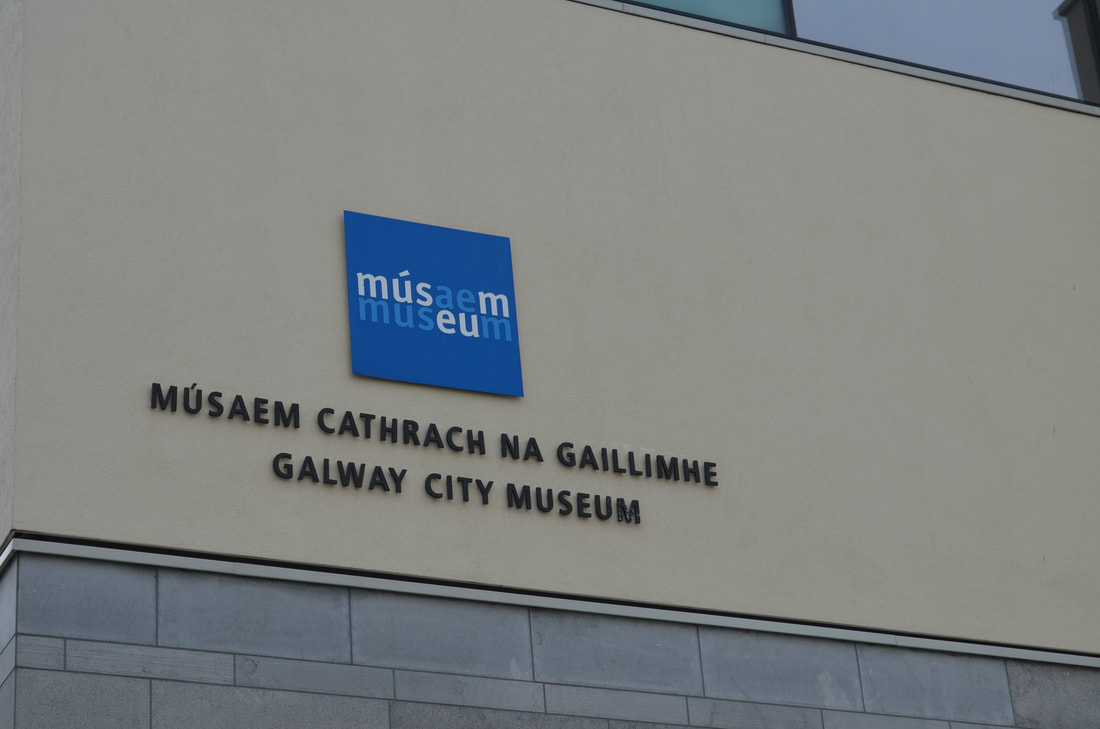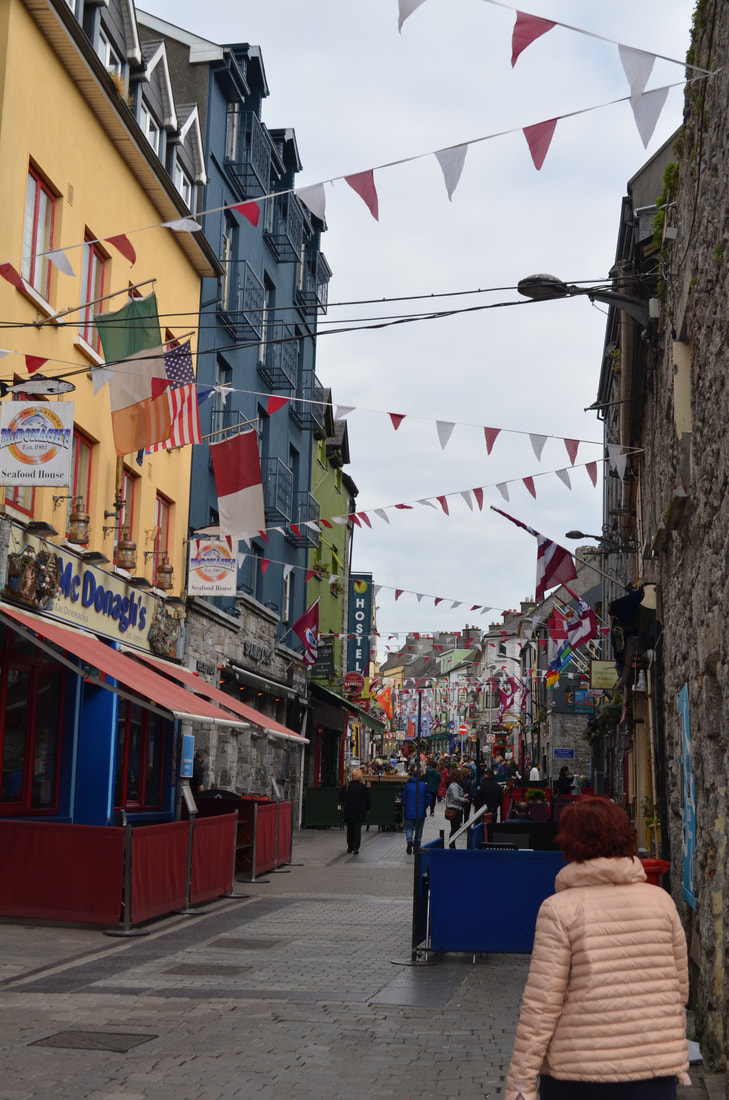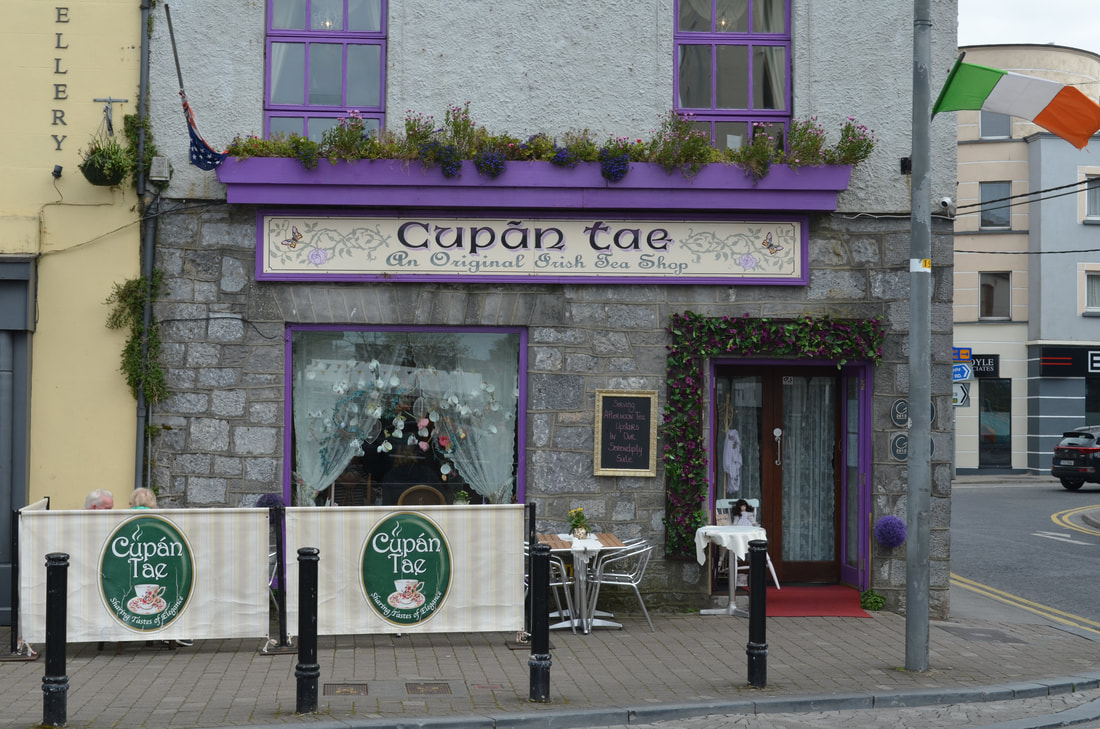|
Having arrived in Galway, we decided to head to Salthill first. Salthill is a seaside area in the city of Galway which was discovered in the early 19th century when bathing became fashionable. The old horse-drawn trams used to bring daytrippers from Galway city to Salthill to enjoy the sea breeze and beach. Nowadays, the promenade seems to be the main drawing point where runners and walkers enjoy the views as far as the Burrren across Galway bay. From Salthill, it is a quick 5 minute drive into the city of Galway. Having the car parked at the Cathedral, we walked across the Corrib river. The Cathedral is one of Galway's largest buildings. Building commenced in 1958 on the site of the old city prison and the cathedral was completed in 1965, making it the last great stone cathedral built in Europe. Just across the bridge, we turned into Newtownsmith. Here you will find the Friars walkway, a path which runs between the Corrib river and the Friars river. Where the Corrib river is one of the shortest rivers in Europe with a total length of only 6km, the Friars river showcases a very early piece of canal engineering. In 1178, the Friars of Claregalway abbey who were fed up taking a detour to enter the river, started the built of the canal. Galway, being a city with a high student population, is always buzzing. From the many tourists to the street buskers, it's alive and kicking. From the Galway races to the Galway arts festival, from the Volvo Ocean race to the Galway ironman, there is always something happening. And we don't know if you know, but Galway has officially been designated European Capital of Culture 2020. So loads of reasons to visit Galway in the near future. Having walked along the Corrib, we reached the Spanish Arch, a remainder of the extension of the old city walls which was built to protect the city's quays. Nearby the Spanish Arch is the Galway city museum ( http://www.galwaycitymuseum.ie/ ), a museum with a variety of permanent and touring exhibitions showcasing Galway's rich history, science and arts. Also nearby is Galway harbour, bustling with sailing yachts and fishing boats. Walking back direction Wolfetone Bridge, we visited the Fishery Watchtower museum. The tower was built in 1852 by the Ashworth Brothers. The building was used over more than 120 years to monitor fish stocks and illigal fishing activity and also served as a draft netting service station. Entrance is free and guided tours are available. Afterwards, we headed towards Quay Street and Latin Quarter, Galway's busiest area. This area has an abundant selection of restaurants and pubs. We popped into Fat Freddy's for a quick lunch. Galway is a vibrant city, from the street buskers to the interesting architecture to the colourful shops, there is loads to see. One of these must visit shops is Charlie Byrne's bookshop ( http://charliebyrne.com/ ). Charlie Byrne's is an independent bookshops which stocks 100,000's of books covering every imaginable subject. The bookshop has multiple rooms which are stocked with books from floor to ceiling. With our day drawing to an end, all we can say is that Galway is a must visit city along the Wild Atlantic Way. It is a city with a "village" character, large enough to allow you to discover new things, small enough to get around it in a day, sample the food, watch the buskers or enjoy the vibrant atmosphere.
0 Comments
Leave a Reply. |
�
About the AuthorWe are Peter & Dolores De Bie. We love the great outdoors, discovering new parts of the world and writing about our adventures along the Wild Atlantic Way and further afield Categories
All
|
Contact us |
Where are our visitors from |
copyright © 2024 www.outdoorfitnesssligo.com
©Website design by Outdoor Fitness Sligo
©Website design by Outdoor Fitness Sligo












 RSS Feed
RSS Feed
